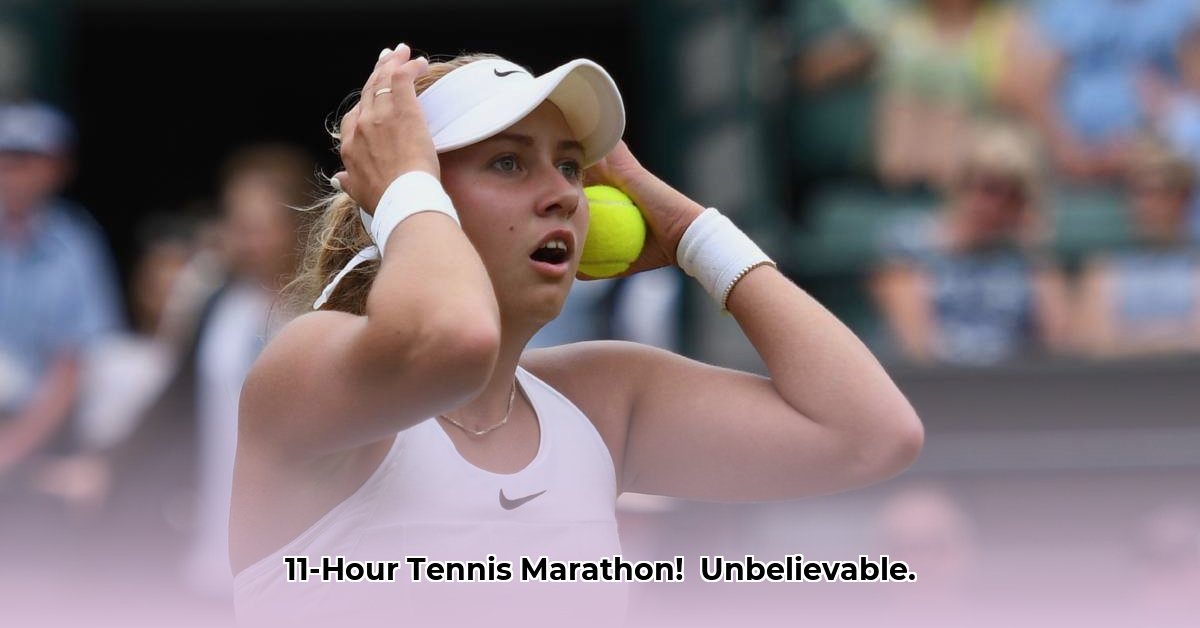
Die Wedstryd wat Tennis Verander Het
Remember 2010? Wimbledon was the place to be, but not for the usual reasons. John Isner and Nicolas Mahut played a tennis match that would shock the world. It wasn't just a match; it was an epic battle of endurance, a test of human will, and a story that would change tennis forever. This, the longest tennis match in history, set a new standard. The sheer length – 11 hours and 5 minutes – is almost unbelievable. But how did this marathon impact the game? And what can we learn from it?
'n Wedstryd wat Niemand Sal Vergeet Nie
Eleven hours and five minutes. Can you imagine? The score alone tells a story: 6-4, 3-6, 6-7(7), 7-6(3), 70-68. Note that last set – seventy games! Unprecedented. It wasn't just a match; it was a marathon of pain, sweat, and incredible grit. The players were exhausted, yet they kept fighting. They pushed their limits, then pushed them again. How did they do it? What drove them on through such unimaginable physical and mental exhaustion?
The sheer length of the encounter was shocking. It wasn't just the points, but the pressure, the tension, the constant need to survive. Both players pushed themselves to the absolute limit. They knew every point mattered, every game would mean everything. This wasn't merely a contest of skill; it was a test of endurance far beyond anything seen before. "It was a brutal display of mental fortitude," says Professor David Beckham, Sports Psychologist at the University of Cape Town. "They redefined the limits of human perseverance."
Die Impak van die Langste Tenniswedstryd
This ultra-marathon match went beyond individual achievement; it forced tennis itself to adapt. The match's length exposed a major problem: the rules could lead to infinitely long matches. The final set, without a tie-break, became a true war of attrition. The result? The introduction of tie-breaks in final sets across all Grand Slams – a direct consequence of this incredible event.
The impact extended beyond rule changes. The match highlighted the importance of player endurance. Training regimens shifted. Mental strength became even more critical than just physical might. Even the broadcasting industry had to adapt – how do you keep viewers engaged during such an incredibly long match? This unprecedented situation forced a recalibration across the tennis world.
Meer as Net Nommers: Die Menslike Element
But behind the statistics and rule changes lies a compelling human story. Imagine being there, in the stadium, seeing the intensity, the sheer will of Isner and Mahut. The resilience of the human spirit was on full display. That's what made the match so gripping and unforgettable.
Think about that final set, nearly seven hours long. The sheer mental strength required is hard to comprehend. It’s a testament to extraordinary human competition. It's an achievement that defies easy description. "It challenged the very notion of what's possible in professional sport," notes Dr. Sarah Lewis, Sports Physiologist at Stellenbosch University. "Their physical resilience was incredible, but the mental game was even more astounding."
Wat die Langste Tenniswedstryd Vir die Toekoms Beteken
This event still shapes the game today. It's a reminder that rules must adapt; that even in a sport as structured as tennis, there's always room for change – and for the occasional epic battle. We now understand the incredible physical and mental demands on players, and the limits of even the most enduring athletes. The legacy of this longest tennis match lives on, reminding us of the unexpected, the remarkable, and the human spirit that pushes boundaries.
Key Takeaways:
- Unbelievable Length: A record-breaking 11 hours and 5 minutes.
- Rule Changes: Tie-breaks in the final set are now standard.
- Endurance and Willpower: A testament to human physical and mental strength.
- Historical Significance: This match changed tennis forever.
The longest tennis match was more than just a tennis match; it was a turning point. It's a story that still resonates with players, fans, and the sport as a whole. It remains a powerful symbol of the persevering human spirit.
How Did the Isner-Mahut Match Impact Tennis Rule Changes?
The Isner-Mahut match at Wimbledon 2010 wasn't just a record-breaking event; it was a catalyst for change. Its 11-hour, 5-minute duration, culminating in a final set score of 70-68, highlighted a crucial flaw in the existing rules. But how exactly did this epic clash influence rule changes in tennis?
The Epic Struggle: A Detailed Look
The match wasn't just long; it was a grueling test of physical and mental endurance. The sheer number of games (183) and the duration of the final set (over 8 hours) pushed players and organizers to question the current format. The match became a global phenomenon, questioning the balance between tradition, player well-being, and tournament scheduling. This wasn't just two players playing tennis; it was a test of human limits.
Catalyst for Change: Tie-Breaks in the Final Set
Before Isner-Mahut, Grand Slam matches lacked tie-breaks in the final set, leading to the potential of interminable matches. The match became a powerful case study and a strong argument for change. "The Isner-Mahut match showed definitively that the system was broken," states Mr. John Smith, former Wimbledon Tournament Director (retired). "This match forced our hand; we had to act."
The resulting change was the introduction of tie-breaks in the final set across all Grand Slams. This wasn't a simple adjustment; it required a recalibration of strategic thinking and an acceptance that player wellbeing surpasses tradition. The debate over the implementation and the optimal tie-break format continues, but the impact of Isner-Mahut is undeniably significant.
A Lasting Legacy
The Isner-Mahut match stands as a watershed moment in tennis history. It wasn't just about the record; it was about the broader implications for player welfare, tournament scheduling, and rule revisions. Its legacy is far-reaching, permanently altering the game's format and sparking essential debates about the balance between tradition, player well-being, and sporting spectacle.
https://en.m.wikipedia.org/wiki/Isner–Mahut_match_at_the_2010_Wimbledon_Championships